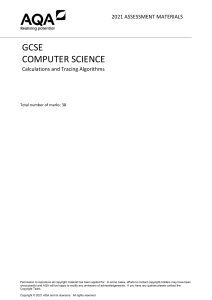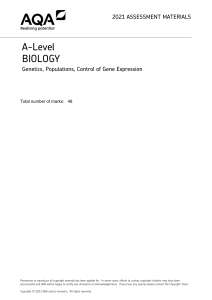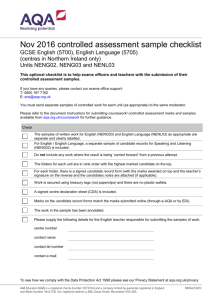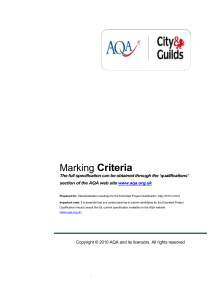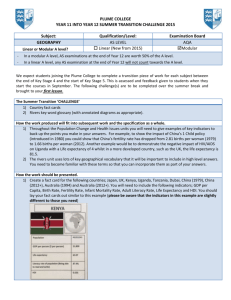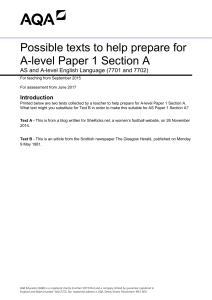Strawman Draft
advertisement
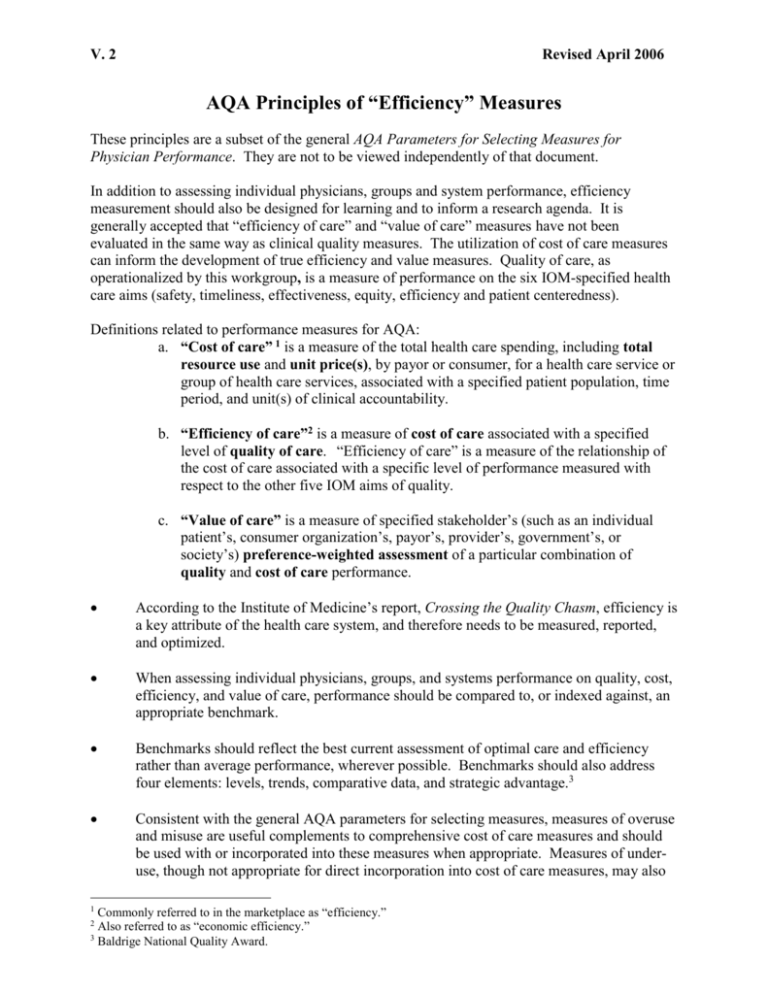
V. 2 Revised April 2006 AQA Principles of “Efficiency” Measures These principles are a subset of the general AQA Parameters for Selecting Measures for Physician Performance. They are not to be viewed independently of that document. In addition to assessing individual physicians, groups and system performance, efficiency measurement should also be designed for learning and to inform a research agenda. It is generally accepted that “efficiency of care” and “value of care” measures have not been evaluated in the same way as clinical quality measures. The utilization of cost of care measures can inform the development of true efficiency and value measures. Quality of care, as operationalized by this workgroup, is a measure of performance on the six IOM-specified health care aims (safety, timeliness, effectiveness, equity, efficiency and patient centeredness). Definitions related to performance measures for AQA: a. “Cost of care” 1 is a measure of the total health care spending, including total resource use and unit price(s), by payor or consumer, for a health care service or group of health care services, associated with a specified patient population, time period, and unit(s) of clinical accountability. b. “Efficiency of care”2 is a measure of cost of care associated with a specified level of quality of care. “Efficiency of care” is a measure of the relationship of the cost of care associated with a specific level of performance measured with respect to the other five IOM aims of quality. c. “Value of care” is a measure of specified stakeholder’s (such as an individual patient’s, consumer organization’s, payor’s, provider’s, government’s, or society’s) preference-weighted assessment of a particular combination of quality and cost of care performance. According to the Institute of Medicine’s report, Crossing the Quality Chasm, efficiency is a key attribute of the health care system, and therefore needs to be measured, reported, and optimized. When assessing individual physicians, groups, and systems performance on quality, cost, efficiency, and value of care, performance should be compared to, or indexed against, an appropriate benchmark. Benchmarks should reflect the best current assessment of optimal care and efficiency rather than average performance, wherever possible. Benchmarks should also address four elements: levels, trends, comparative data, and strategic advantage.3 Consistent with the general AQA parameters for selecting measures, measures of overuse and misuse are useful complements to comprehensive cost of care measures and should be used with or incorporated into these measures when appropriate. Measures of underuse, though not appropriate for direct incorporation into cost of care measures, may also Commonly referred to in the marketplace as “efficiency.” Also referred to as “economic efficiency.” 3 Baldrige National Quality Award. 1 2 V. 2 Revised April 2006 serve as useful supplements to identify opportunities for avoiding complications or preventable progression of illness. Any efficiency of care measures should meet the same measurement criteria identified by the AQA Performance Measures Workgroup during its selection of the quality measures (e.g., actionable, valid, relevant, feasible, minimum burden, etc.).
